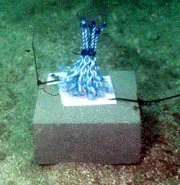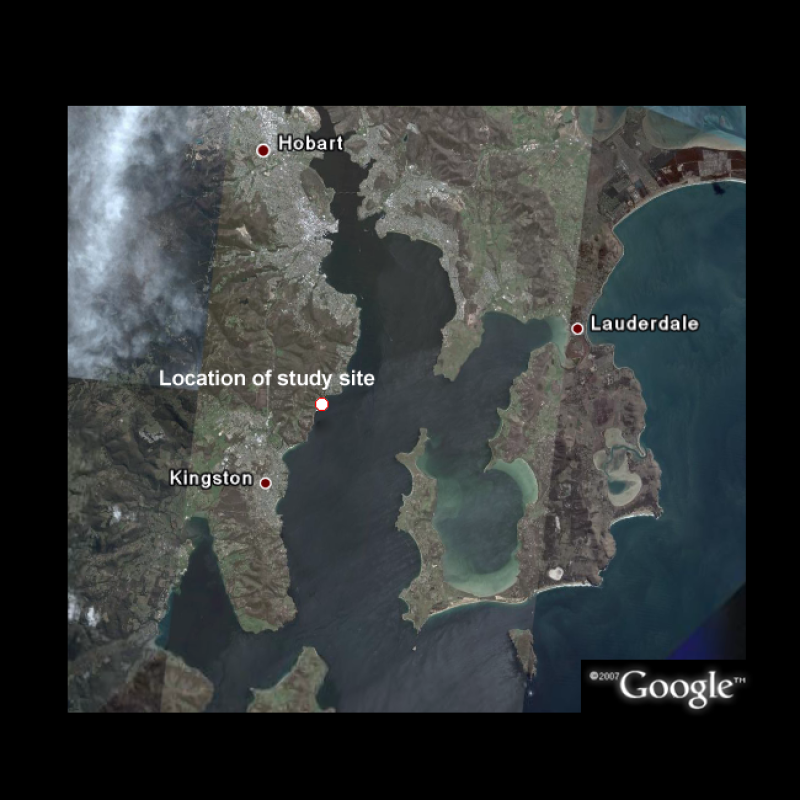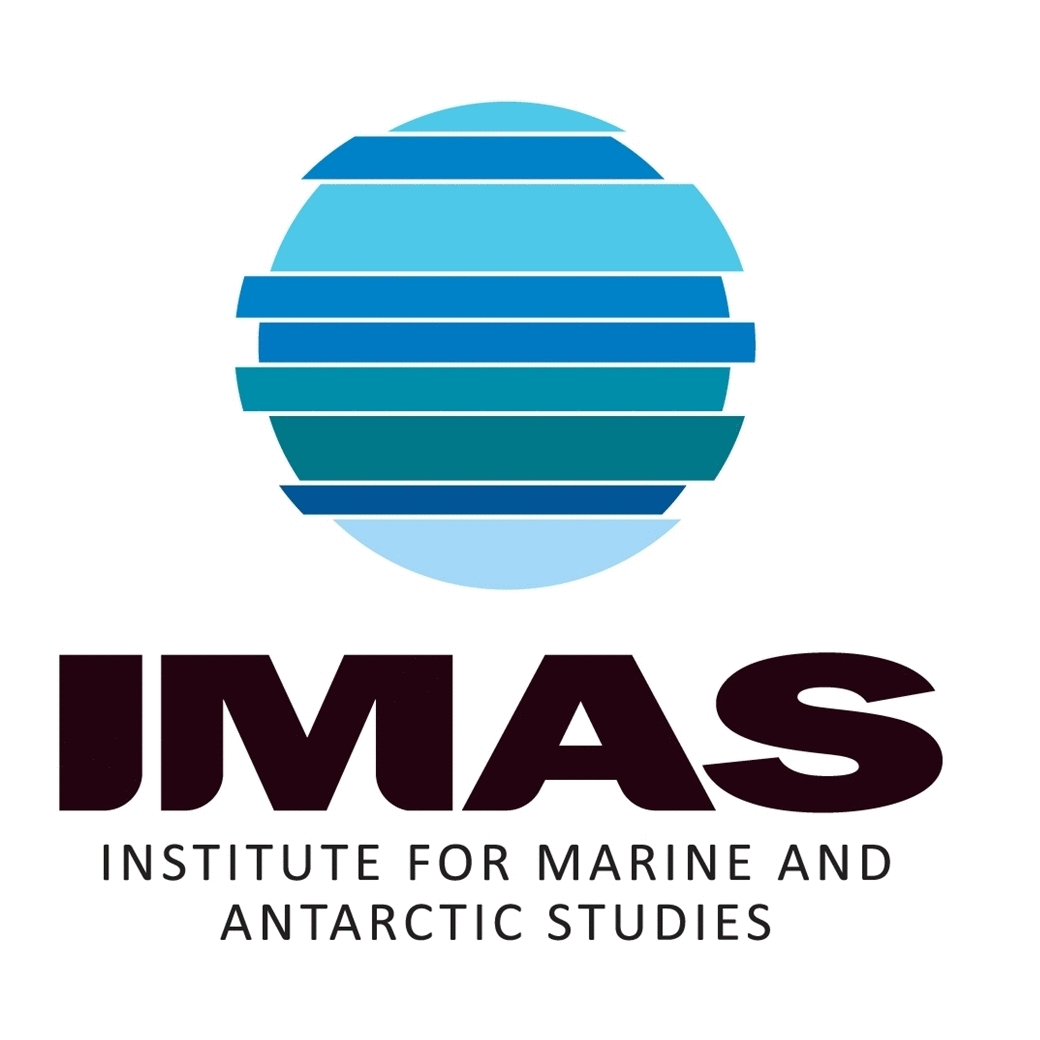Community assembly in marine macrofauna communities
Community assembly in macrofauna communities developed in artificial kelp holdfasts was monitored at 1-month intervals over a 13 month period using a sampling design that used systematic patterns of temporal overlap and changes in start and collection dates.
The hierarchical nature of the experimental design allowed several different approaches to analysis; by date of deployment and by date of collection of the artificial habitats, which enabled comparison of community assembly with and without the seasonal effects of the date of collection, and by community age to test whether there were alternative end-states to assembly depending on season or recruitment history.
Simple
Identification info
- Date (Creation)
- 2007-07-06T15:06:00
Principal investigator
Collaborator
- Other citation details
- Regina Magierowski is the Intellectual Propert Rights owner of the data
- Purpose
- The aim of this experiment was to study the links between recruitment and community dynamics through the assembly process by comparing community trajectories for substrata deployed on different dates, and thus subject to different potential recruitment from the larval pool.
- Status
- Completed
Principal investigator
- Temporal resolution
-
P0Y1M0DT0H0M0S
- Topic category
-
- Biota
Extent
))
- Geographic identifier
-
Derwent Estuary, TAS
- Title
- Marine Community Profile v1.2 Geographic extent names
- Date (Revision)
- 2006-10-13T00:00:00
Owner
Australian Ocean Data Centre Joint Facility
Temporal extent
- Time period
- 1997-01-01T00:00:00 1999-01-31T00:00:00
Vertical element
- Minimum value
- 8
- Maximum value
- 8
- Identifier
- EPSG::5715
- Name
- MSL depth
- Maintenance and update frequency
- Not planned
Resource format
- Title
- Excel
- Date
- Edition
- version 2000
- Keywords (Theme)
-
- Kelp holdfast communities
- Keywords (Taxon)
-
- Ecklonia radiata
- Global Change Master Directory (GCMD) Earth Science Keywords Version 8.0
- Keywords (Discipline)
-
- Temperate Reef
Resource constraints
- Use limitation
- Attached data is owned by Regina Magierowski (principal investigator cited in this metadata record). This data remains the Intellectual Property of the original owner (Regina Magierowski) of the data. The data may be downloaded for use in accordance with the Copyright Act 1968.
Resource constraints
- Linkage
-
http://i.creativecommons.org/l/by/3.0/au/88x31.png
License Graphic
- Title
- Creative Commons Attribution 3.0 Australia License
- Website
-
http://creativecommons.org/licenses/by/3.0/au/
License Text
- Other constraints
- The citation in a list of references is: citation author name/s (year metadata published), metadata title. Citation author organisation/s. File identifier and Data accessed at (add http link).
- Other constraints
- Data download and use is subject to the following additional condition: - That thorough attention is given to the contents of any metadata associated with the data, and that the Point of Contact referred to in this metadata be consulted with any enquiries regarding suitable use of the dataset.
- Language
- English
- Character encoding
- UTF8
- Environment description
- Excel file containing average total abundance, richness, Shannon-Weiner diversity and Pielou's evenness for each deployment date by community age. Standard deviations and standard errors are also provided.Word document containing a list of the taxa identified in the study.
Content Information
Distribution Information
- OnLine resource
- DATA - Assembly data average richness [direct download]
- OnLine resource
- SUPPLEMENTARY INFO - List of taxa identified [direct download]
- OnLine resource
-
imas:ZOO_RHMagierowski_Community_assembly_marine_macrofauna_communities_GV
Location of artificial kelp holdfast experiment
Resource lineage
- Statement
- HOLDFAST CONSTRUCTION Artificial kelp holdfasts were constructed of bundles of 10, 150-mm lengths of polypropylene rope bound together at one end with a plastic cable tie. At the other end, the rope strands were separated, splayed and glued to a 100 mm x 100 mm PVC base. The design was similar in size and physical complexity to the holdfasts of Ecklonia radiata, the most common species of kelp in southern Australia. Holdfasts were attached to concrete bricks with cable ties and distributed over sand adjacent to a healthy E. radiata dominated reef. The study site was 100 m x 4 m, and holdfasts were deployed randomly to 1 m grid co-ordinates. The rocky reef ran the full length (100 m) of the grid and was likely the major source of recruits to the holdfasts.
- Hierarchy level
- Collection hardware
Resource lineage
- Statement
- SAMPLING DESIGN Holdfasts were deployed each month for 13 months beginning in December 1997. At each deployment, sufficient holdfasts were established to collect 6 replicate holdfasts each subsequent month until January 1999 (Figure 2). An earlier pilot study indicated that 6 holdfasts was the minimum sampling intensity to adequately estimate natural variability across replicate holdfast communities, standard errors in the abundance of individual taxa did not significantly decrease with a greater number of replicates. Deployment and collection dates were toward the end of the nominated month, weather permitting. Water temperature peaked in January and February at 18oC and reached a minimum of 11oC during June, July and August. A total of 408 holdfasts were deployed to random positions on the grid and later recovered. Monthly collections involved recovering 6 randomly selected replicate holdfasts from each previous month of deployment. Holdfasts were gently covered with a plastic bag before cutting the cable ties attaching the holdfast to its concrete brick and sealing the bag for transport to the surface. Vacated grid-positions were open to subsequent deployment of another artificial holdfast (if randomly selected). Due to poor weather, holdfasts could not be collected or deployed in September while collections were not possible in June. For treatments deployed in December 1997, 4 replicates (rather than 6) were collected each subsequent month.
- Hierarchy level
- Attribute
Resource lineage
- Statement
- LABORATORY PROCESSING Holdfasts were preserved in ~5% buffered formalin. For processing, holdfasts were readily broken open (by the cutting of the cable tie) and washed thoroughly over a 1 mm sieve to remove all animals. Solitary animals retained on the sieve were identified where possible to the level of family, the most notable exception being amphipods, which were identified to sub-order. Colonial organisms were not enumerated because they were very rare. We deemed taxonomic resolution to the level of family as the optimal cost-benefit trade-off given the large abundance of organisms encountered (148, 841 individuals), and that family-level patterns typically reflect patterns at the species-level
- Hierarchy level
- Attribute
- Hierarchy level
- Dataset
Platform
Identifier
- Code
- diver
Metadata
- Metadata identifier
- 25cdcbf0-2b7e-11dc-aaa4-00188b4c0af8
- Language
- English
- Character encoding
- UTF8
Point of contact
Type of resource
- Resource scope
- Dataset
- Metadata linkage
-
https://metadata.imas.utas.edu.au/geonetwork/srv/eng/catalog.search#/metadata/25cdcbf0-2b7e-11dc-aaa4-00188b4c0af8
Point of truth URL of this metadata record
- Date info (Creation)
- 2020-08-19T00:45:10
- Date info (Revision)
- 2020-08-19T00:45:10
Metadata standard
- Title
- ISO 19115-3:2018
Overviews


Spatial extent
))
Provided by

 TemperateReefBase Geonetwork Catalogue
TemperateReefBase Geonetwork Catalogue